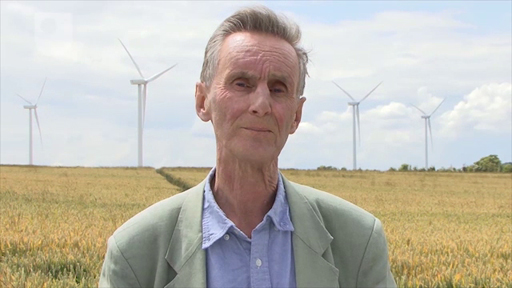Week 6: Wind energy
Introduction
Wind energy has been used for thousands of years for milling grain, pumping water and other mechanical power applications. But it is the use of wind energy as a pollution-free means of generating electricity on a significant scale that is attracting most current interest in the subject.
This week you will look at modern wind energy technology, at the atmospheric processes that power it, and ways of calculating wind power and energy. You will also look at the environmental impact of turbines, at offshore wind power, and at the economics and future potential of wind technology.

Transcript
The Earth’s winds are caused when different regions of the atmosphere are heated by the Sun to different temperatures causing pressure differences that result in the movement of air. Wind energy has been used for thousands of years, in sailing ships and in windmills for pumping water or grinding corn.
This week we look at modern wind turbines at the atmospheric and aerodynamic processes that power them and at ways of calculating the power and energy they produce. We also look at their environmental impact, the economics and the future prospects of wind technology.
Attempts to generate electricity from wind have been made since the late 19th century but it was only around the 1980’s that the technology began to mature.
Between the early 1980’s and the late 2000’s the costs of wind turbines fell steadily and the power of typical machines increased significantly. Now on reasonably windy and accessible sites wind turbines are one of the most cost effective methods of electricity generation.
Wind turbines are increasingly being deployed offshore where wind speeds are generally higher and planning constraints less demanding. Here the technically accessible wind resources are massively increased. Of course offshore wind involves significant additional technical challenges and the cost of generation is higher.
The reason developments in wind energy technology have made it one of the fastest growing renewable energy sources worldwide, a total of 318 gigawatts of wind power had been installed by the end of 2013. An increase of 10% on the previous year.
We conclude this week with a look at recent developments in wind technology and a discussion of the contribution that wind might make to the needs of the EU and globally by 2050.
By the end of this week, you will be able to:
- describe at an introductory level the main aspects of wind energy including the relationship between wind speed frequency distribution and electricity production
- define the terms cut-in wind speed, rated wind speed, shut-down wind speed and rated power
- describe at an introductory level the main current types of wind turbines and how they operate
- understand at an introductory level the environmental and social effects, beneficial and deleterious, of wind energy development.
